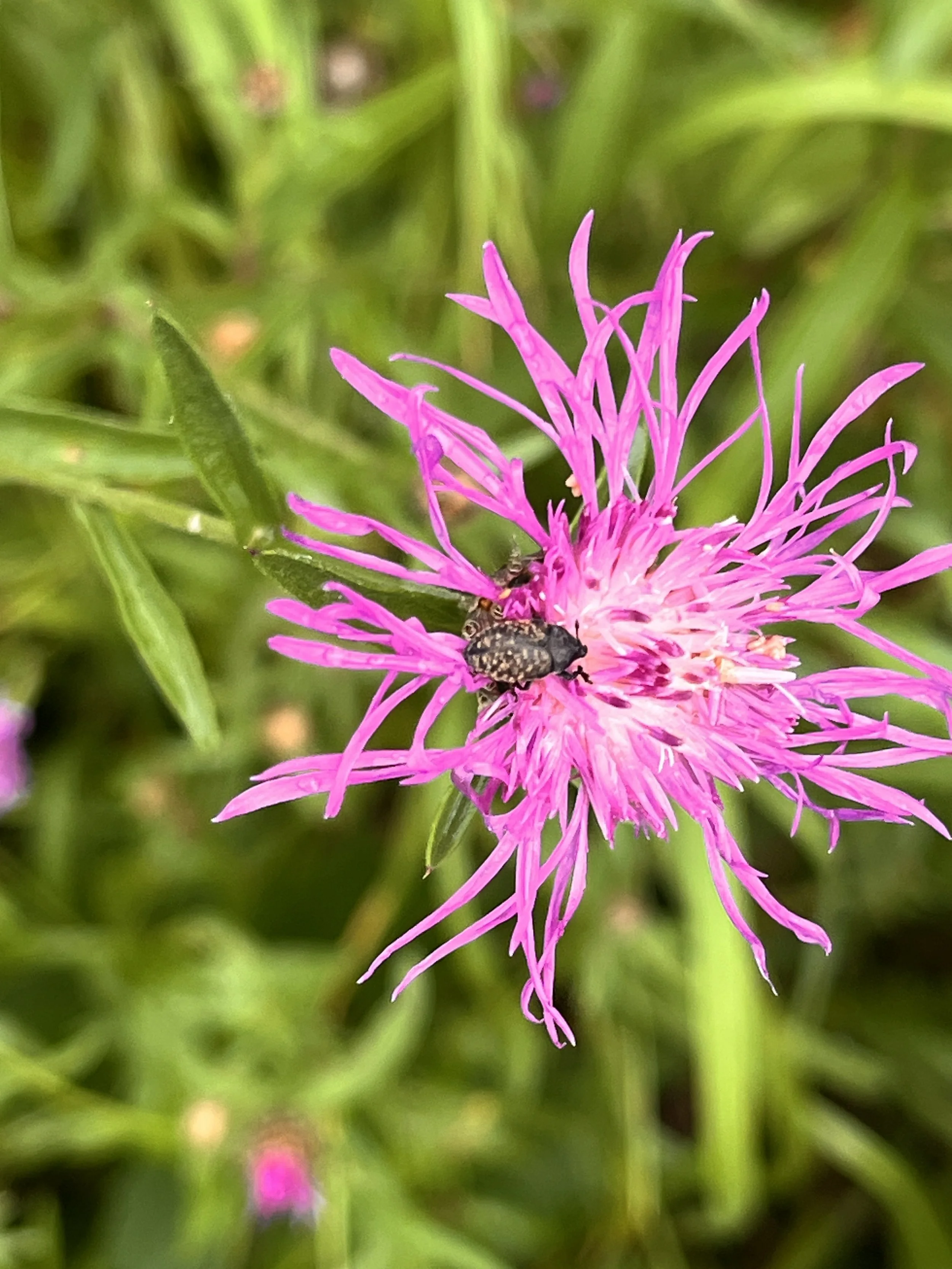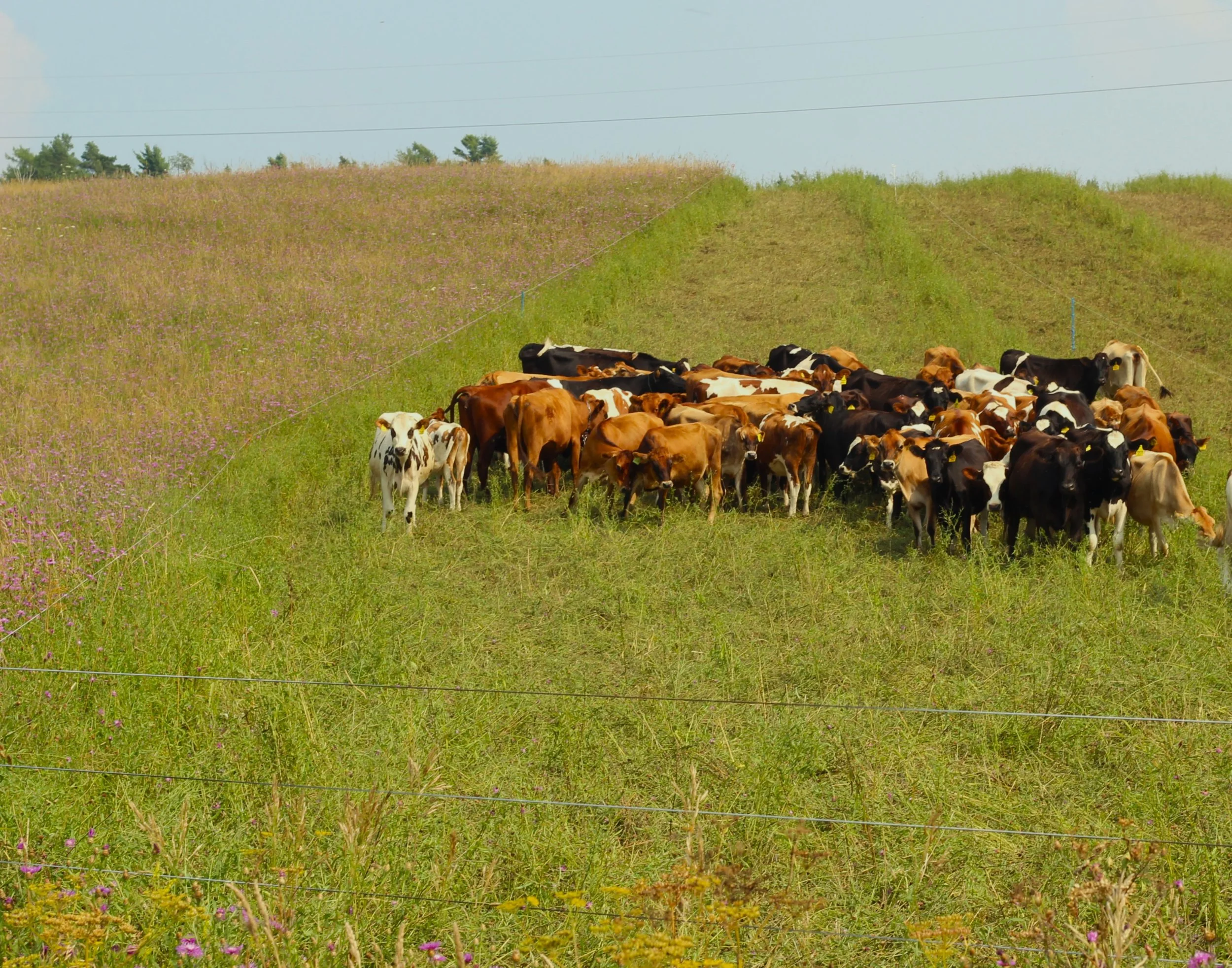Don’t Nap on Knapweed
by Troy Bishopp
There’s nothing like an after-lunch nap under a shade tree in the dog days of summer. But lately it’s been interrupted by what to do with the purple-flowered chameleon, known as Knapweed, invading pastures, hayfields, road ditches and fallowed land.
It’s time to wake up and pay attention to control measures before it goes to seed and shows up next year with even more vigor.
At a recent pasture walk with grass-fed organic dairy farmers it was a heavy concern because the plant was reducing dry matter intake, milk production and slowly gaining a foothold anytime there was an open sward. Many farmers inherited a monoculture of it because they bought sod farms with pastures and hayfields that were left unmanaged.
My intimate relationship with the Meadow and Brown Knapweed varieties has been going on here in New York for over 15 years, ever since rolling out bought-in hay infested with it, coupled with a few major dry years (which it loves), long rest periods and it’s amazing allelopathic ability to reduce cool season grass competition. It’s supposed to be a biennial but because of its uncanniness to produce abundant seeds, it’s really more like a perennial, making it an invasive species across New York and many other Northeastern states. The western US states all know about this quandary. It’s a big problem.
According to the late Newman Turner, this “herb” knapweed or hardheads, as he called them, is one of the few indicators of phosphate deficiency, which Dairy One soil samples verify on many grazing operations. He said, “The existence of knapweed is one of the few justifications for applying rock phosphate as well as manure and ground limestone.” Curious to me was his description of how far down the plant’s roots will go to tap subsoil phosphorus and thrive when other plants won’t. Does it also break up compaction with its taproot and make pathways for water infiltration?
This would indicate to me that my practice of strategic mowing, grazing impact and ruminant mineral supplementation would put that “fertility” back on the land for the microbes to share. However, based on its tenacity to infiltrate the seedbank, it seems much more complicated than this. Soil health coach, Nicole Masters suggests that a healthy soil typically aims for a fungal to bacterial ratio of 1:1 or even slightly higher, particularly in established grasslands we are managing. What are our ratios? Cornell’s Central NY Regional Field Crop Specialist, Erik Smith is questioning if there is enough balanced supply of nitrogen and soil PH cycling through the system to stem woody plant proliferation. Is the soil biology right?
This question of amendments, allelopathy levels, biological activity, compaction issues and any other “kitchen-sink” soil-based investigations is being vetted by a team of collaborating farmers, NY Soil Health Program professionals, NE NatGLC and Cornell Extension educators this summer from active knapweed areas and control areas with none, in a project called, “Understanding and implementing non-chemical ways to control knapweed in NY pastures”.
Another aspect of control is the tools we may choose based on a farmer’s context. Herbicide use has its place but that would jeopardize other perennial plants. Tillage is on the table but that comes with consequences. Frequency and timing of mowing helps. Dr. Allen Williams says, “the best control is through adaptive grazing impact and heavy trample”. Kathy Voth said to teach the animals to eat it because it’s rich in phytonutrients.
Nathan Weaver mob grazing his heifers and dry cows to control meadow knapweed.
Overseeding and smothering it out with bale-grazing has applications. We are starting to see beneficial insects eating it, such as the knapweed seedhead-feeding weevil, blunt knapweed flower weevil or root weevils. There are many control strategies that can be used together if warranted. It will take persistence and trial and error. “None of these tactics are a silver bullet, so managing knapweed is a multi-year effort. But these will go a long way toward reining them in, said Smith.
Do I dare suggest it might be an asset? Before it bolts and the rosettes flourish (much like spinach), it is actually quite nutritious for livestock. Early season forage samples indicate 18% crude protein, and NDF levels of 24% to 53%. In Jerry Brunetti’s honor (former owner of Agri-Dynamics), samples came back indicating the plant parts the animals were actually consuming, as good as pre-bud alfalfa with an excellent mineral profile.
And now in August, our cows and goats are eating all the purple flowers and the top leaves when turned into a paddock, which turns out to supply twice the brix levels of the other plants in the field. This turns out to be good stuff so why would we want to kill it?
Adding to the complexity of control for this “forage-weed” is timing. Do we have the patience to let it flower (allowing bees to make you some awesome honey and grassland birds to nest) and then graze it or mow it thereby stealing the plant’s ability to seed. Adding to the drama is many farmers do one kind of dairy or livestock enterprise, essentially having a monoculture of animal tools fighting a monoculture weed. It’s a recipe that Mother Naure abhors.
We should weigh the control options very carefully and work with nature on the same plane to consider the answers you need, in the context you need it in. But it might take a little nap to get you prepared for a change in mindset.


